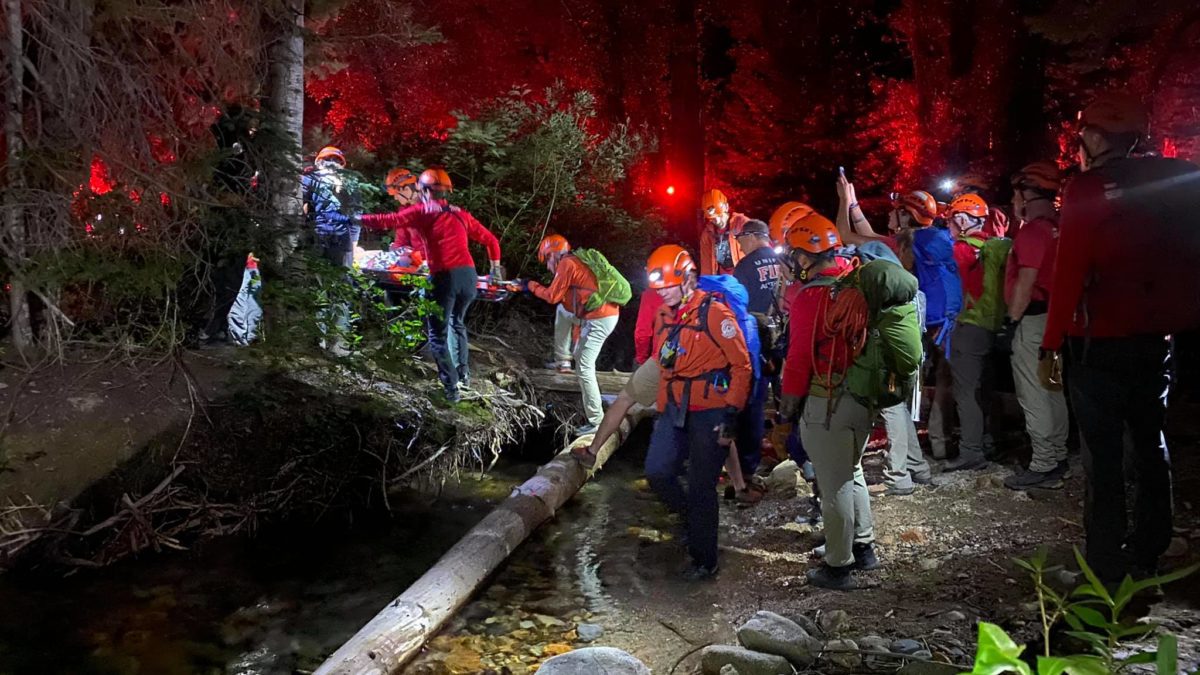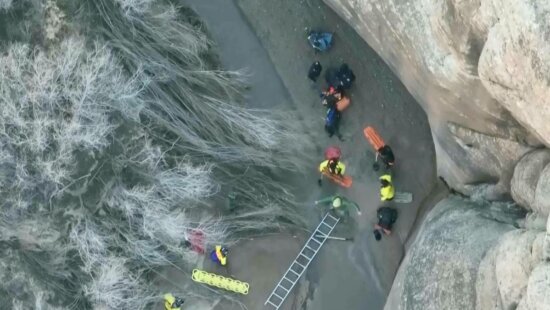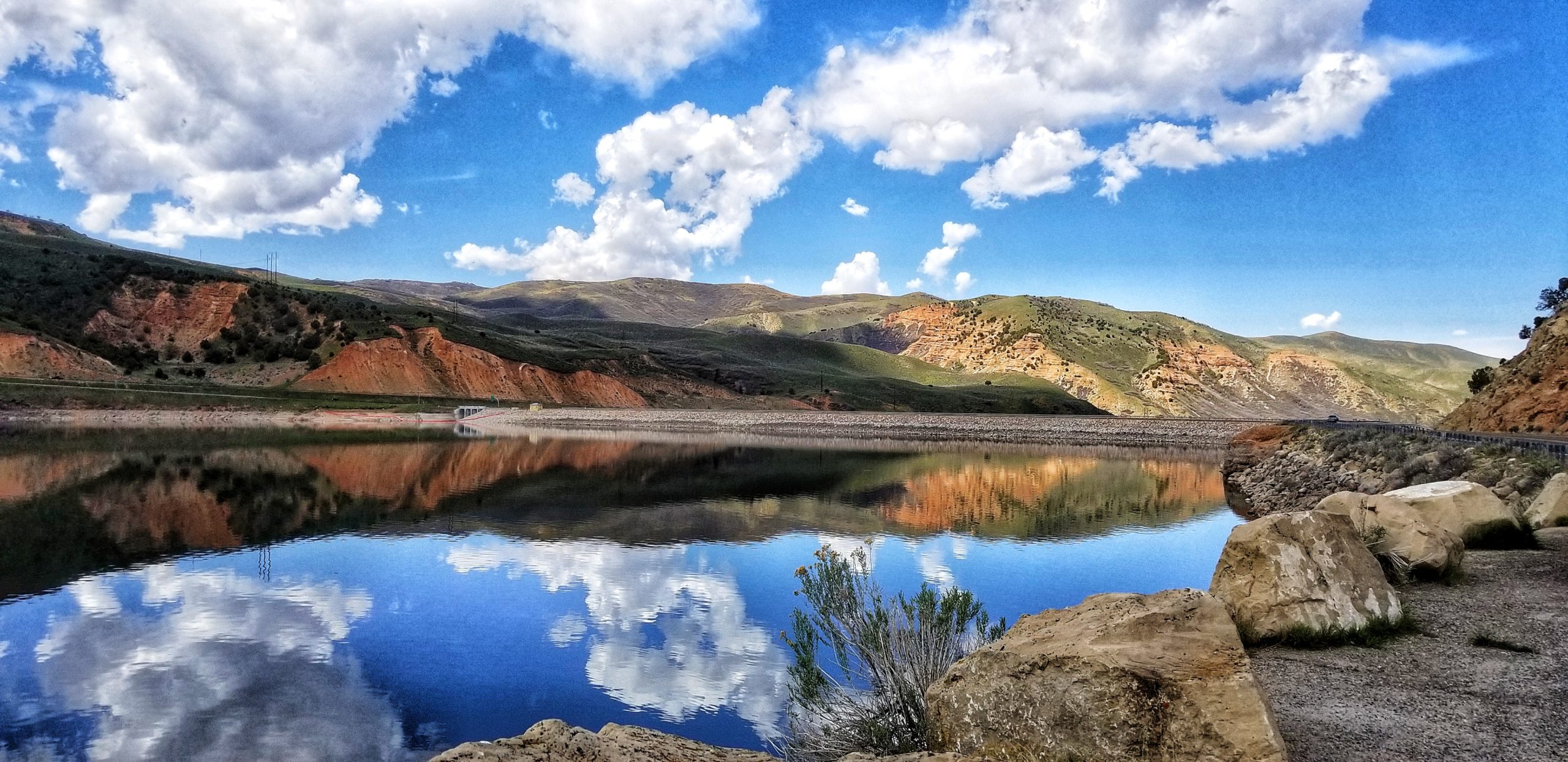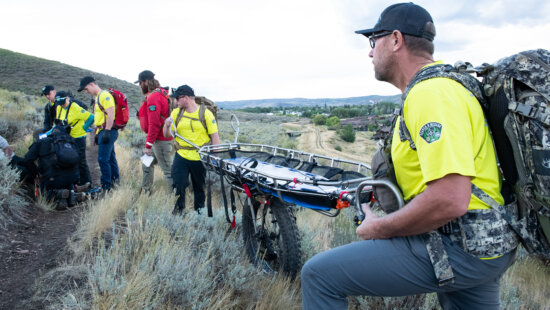Police & Fire
OSHA rule threatens to drive Search and Rescue staff volunteers away

The rescue in Little Cottonwood Canyon took a total of 90 minutes (June 27). Photo: Salt Lake County Sheriff’s Search and Rescue
'(Search and rescue) volunteers are essential and must be allowed to operate with limited restriction and regulation. We call upon OSHA to modify the proposed rule to exempt all sheriff (search and rescue) volunteers from the requirements in the proposed rule'
Sheriffs from across Utah are pushing back on a proposed rule change from the Occupational Safety and Health Administration, or OSHA, that they say could be “catastrophic” for search and rescue crews.
The proposed rule, called Emergency Response Standard, takes up more than 7,000 pages on the Federal Register and deals mostly with emergency responders and fire brigades. It also changes training and safety requirements for volunteer firefighters and search and rescue workers.
But Utah sheriffs and lawmakers say the OSHA proposal would be a financial burden on both counties and volunteers, mandating training for scenarios search and rescue crews are rarely presented with, while requiring that counties hire extra medical personnel.
“It would severely cripple our organization. Most of it comes down to resources and money,” said Utah County Sheriff Mike Smith, president of the Utah Sheriffs Association. The group represents all 29 county sheriffs in Utah, all of whom signed on to a letter in July opposing the OSHA rule.
Representatives for OSHA and the U.S. Department of Labor did not respond to an interview request.
The proposal would not target “traditional volunteers,” instead mandating changes to “technical” search and rescue groups. That includes volunteers that conduct rope, vehicle and water rescues — it even designates ATV operations as a “specialized skill.”
According to the sheriffs, it would require some search and rescue crews to undergo at least 690 hours of training.
“Presumably, volunteers would give up on an opportunity to serve their community because of the difficulty and expense of getting cleared for service,” the letter reads.
OSHA also determined additional “medical surveillance” is necessary because emergency responders, including technical search and rescue volunteers, are exposed to infectious diseases, carcinogens and “belligerent behaviors” including active shooter situations, all while using personal protective equipment like gas masks or oxygen tanks.
The sheriffs say those assumptions are “false and misleading.” Wilderness and backcountry search and rescue volunteers don’t respond to structure fires, drug overdoses, active shooter scenarios or “dangerous confrontational situations.” Nor are they issued gas masks or oxygen tanks.
Plus, the sheriffs write, OSHA would require volunteers to be subjected to physical examinations “by a specifically trained doctor,” placing an additional financial burden on counties.
“This is a catastrophic problem that can not possibly be overcome. (Search and rescue) volunteers are essential and must be allowed to operate with limited restriction and regulation. We call upon OSHA to modify the proposed rule to exempt all sheriff (search and rescue) volunteers from the requirements in the proposed rule,” reads the letter. “Failure to do so will inevitably cause a mass exodus of volunteers in the system placing countless lives at risk across Utah and across the west.”
The additional cost of training, plus the other requirements outlined in the rule, would be the financial equivalent of having a fulltime, paid search and rescue crew, said Cache County Sheriff Chad Jensen.
“My county couldn’t fund that. I don’t know how my county would. That’s another full time police department, basically,” Jensen told lawmakers during a federalism commission hearing in August, warning that it would “would basically kill volunteer fire departments and volunteer search and rescue groups.”
During the meeting, lawmakers agreed to participate in a public hearing in November and voice their opposition to the proposed rule.
Smith, with Utah County, told Utah News Dispatch he thinks the proposed rule stems from a misunderstanding by OSHA. He said the agency focused on more urban, eastern states where paid firefighters often respond to search and rescue calls, which often have a much different scope than what Western states deal with. An urban search and rescue operation might require dealing more with combative subjects, structure fires and, like the rule states, active shooter scenarios.
“It’s a different scenario than out here in the West,” Smith said. “This is not what these guys are doing. They’re out in the wilderness.”
The rule comes amid what sheriffs in Utah say is an increase in search and rescue calls. Visitation on Utah’s public land has increased since 2020, according to both federal and state data — with that increase comes more injuries and a greater need for first responders.
“We’ve had a really busy summer,” said Smith.
In a July statement, Washington County Sheriff Nate Brooksby said the county saw a 30% increase in search and rescue calls over several years, while Kane County Sheriff Tracy Glover said sheriffs “are being tasked with higher call volumes for lost or injured visitors.”
by Kyle Dunphey, Utah News Dispatch




















